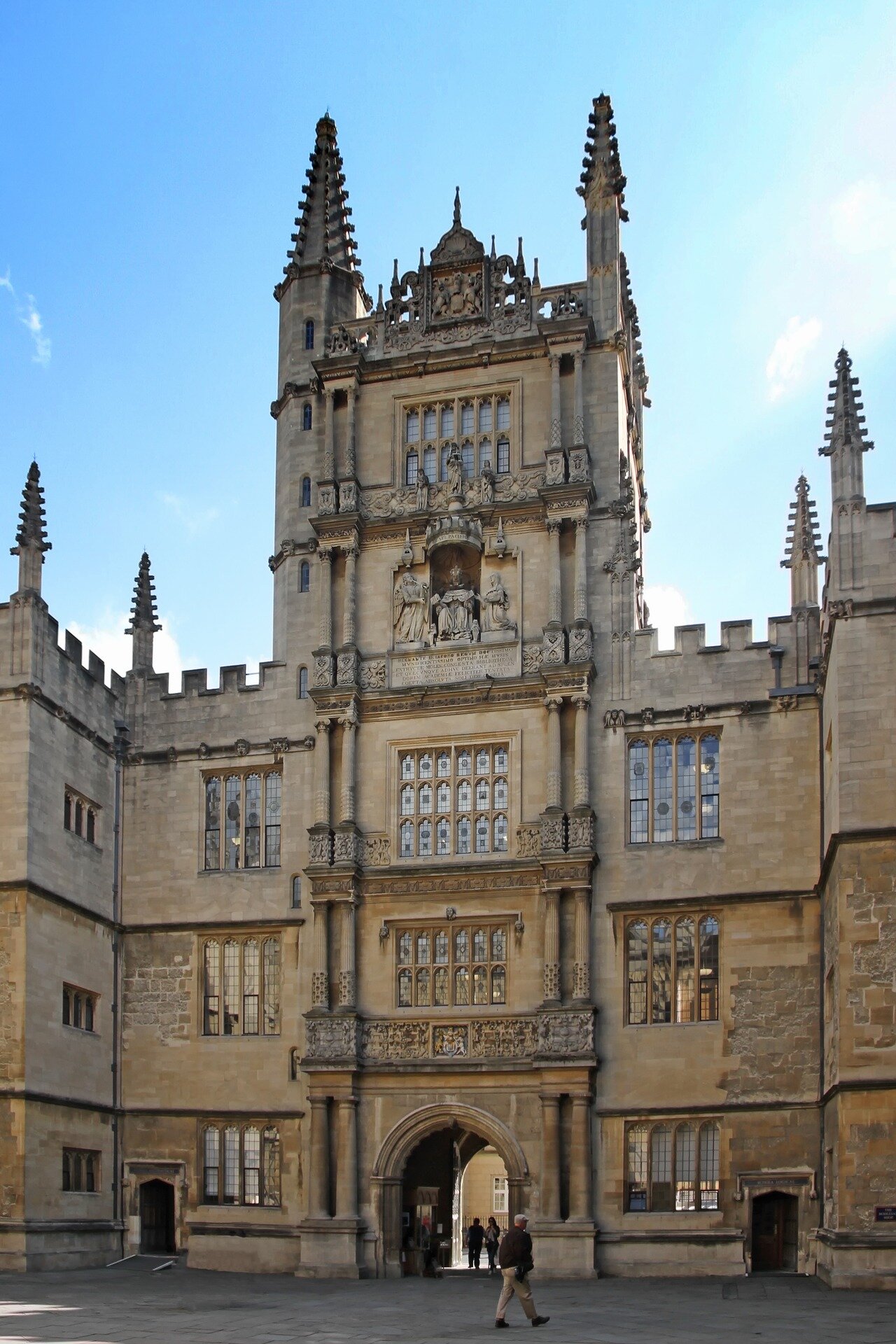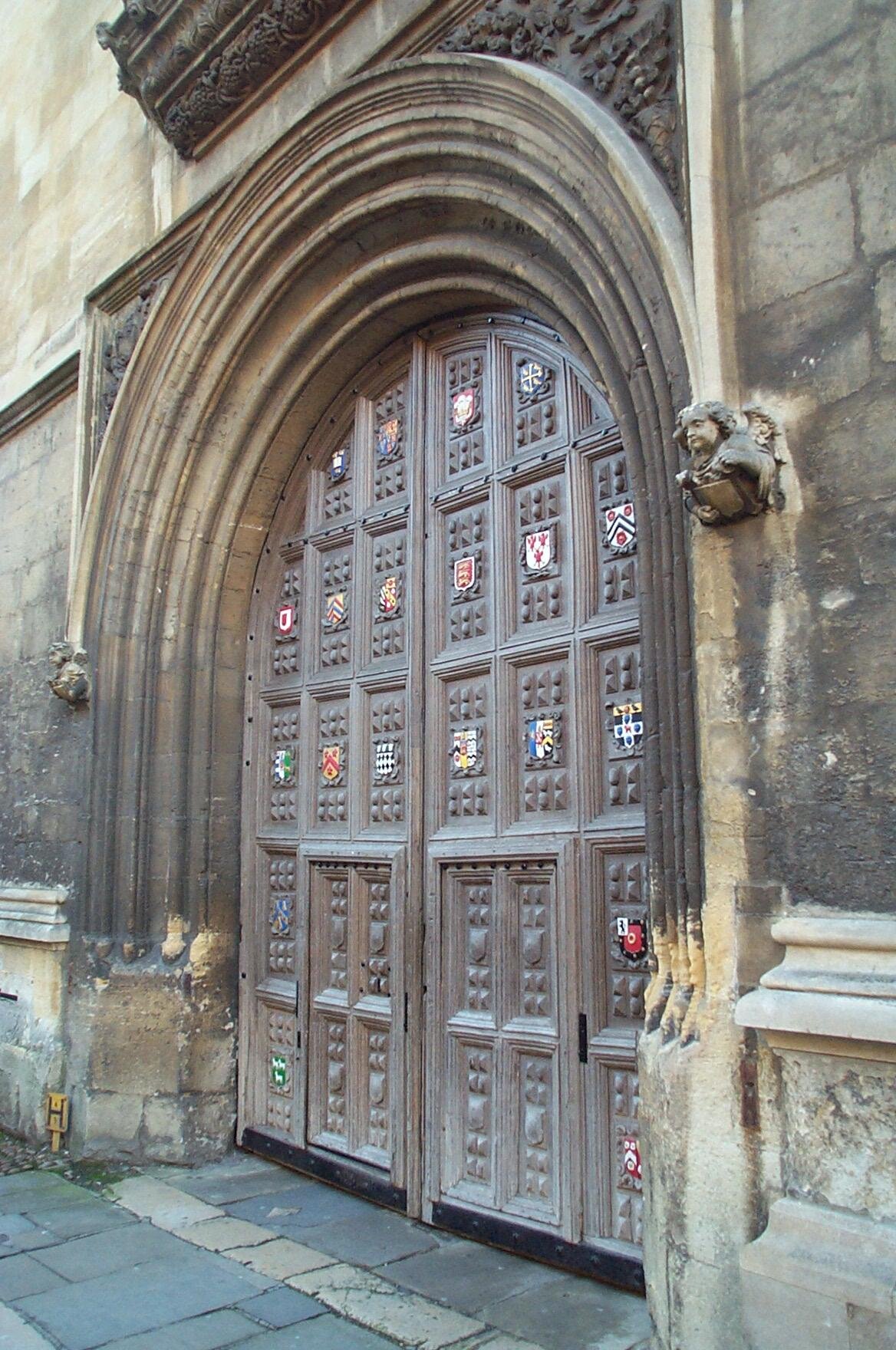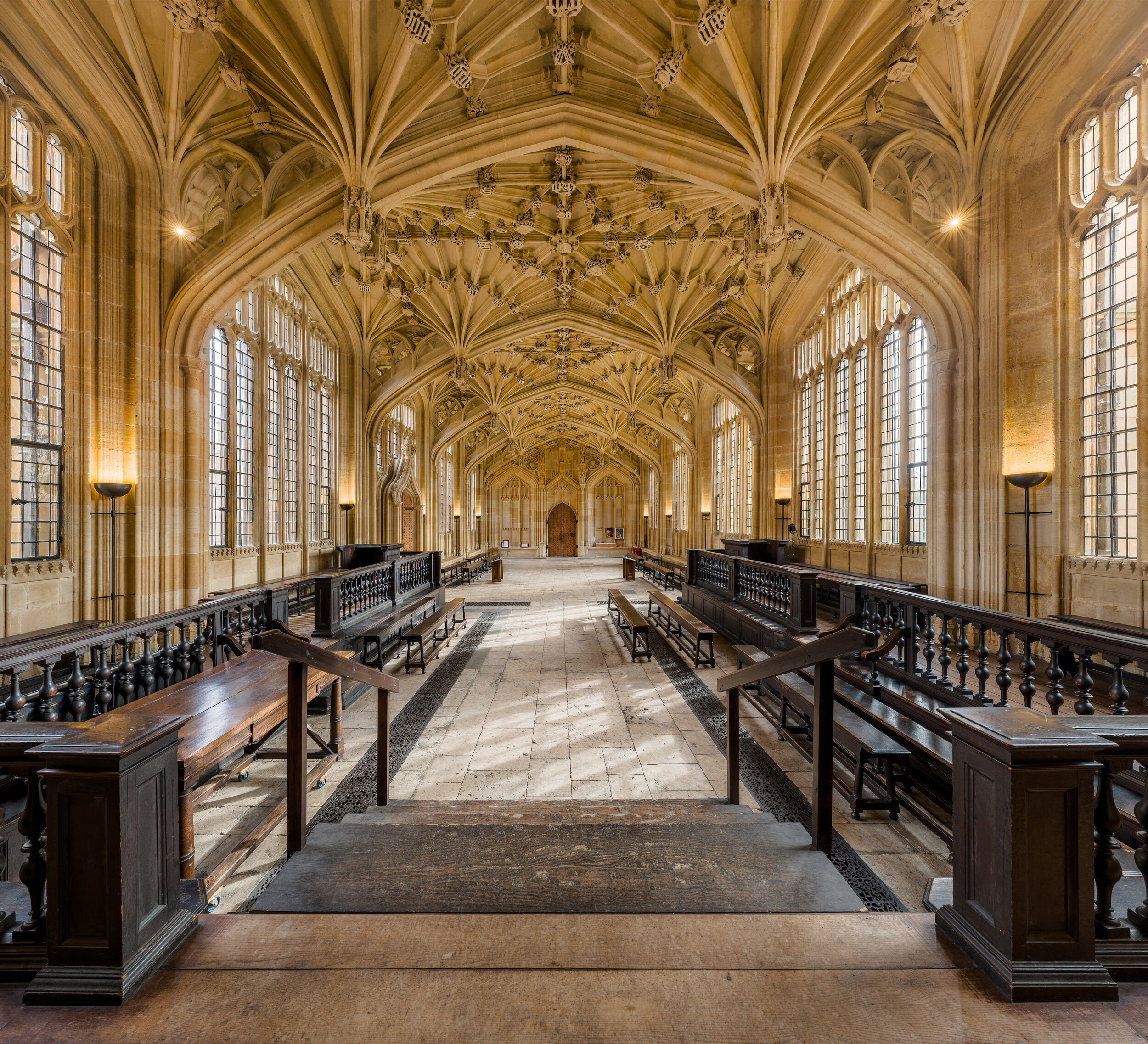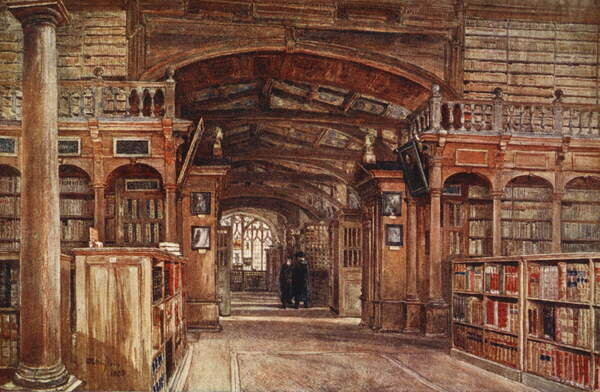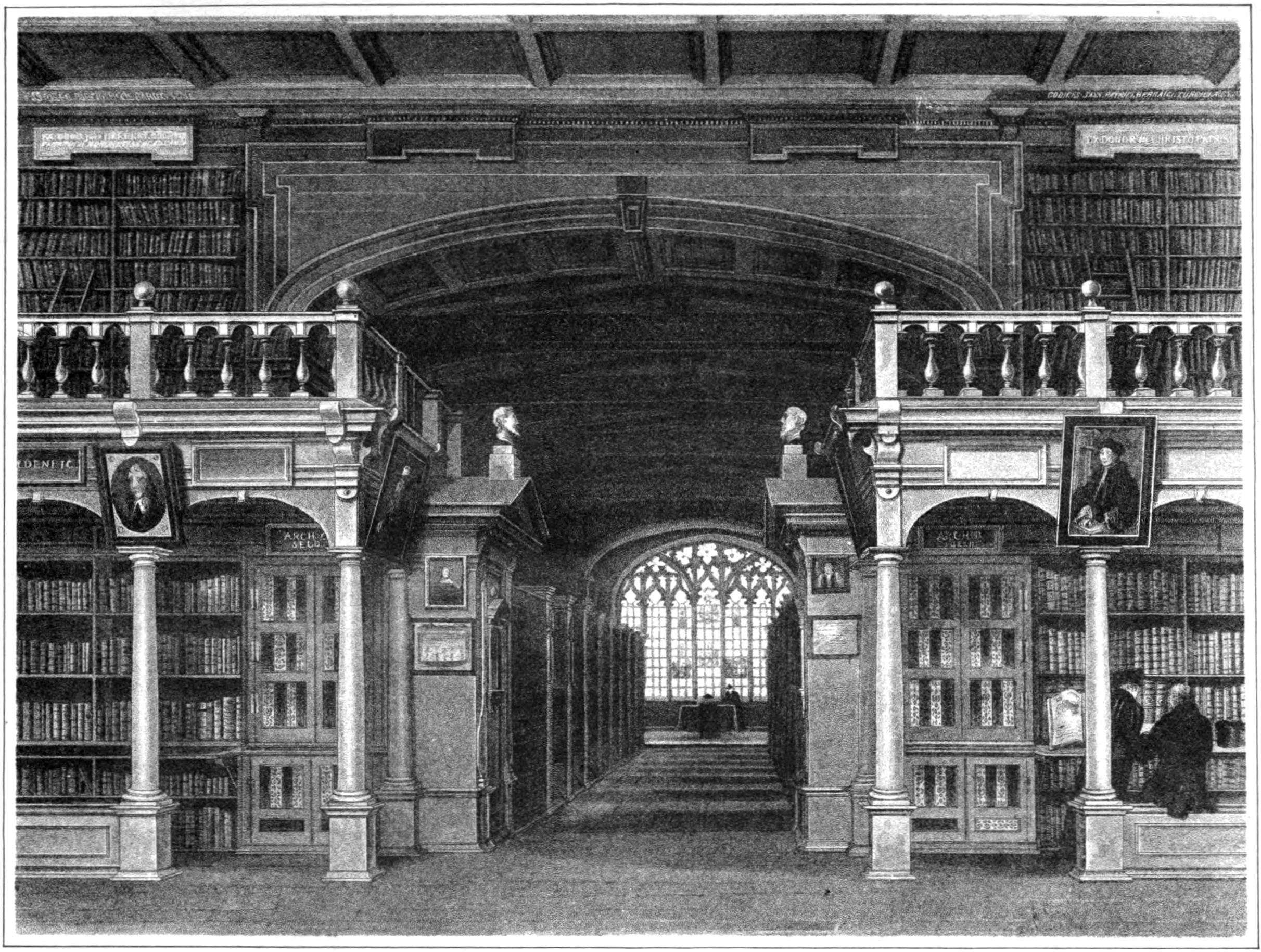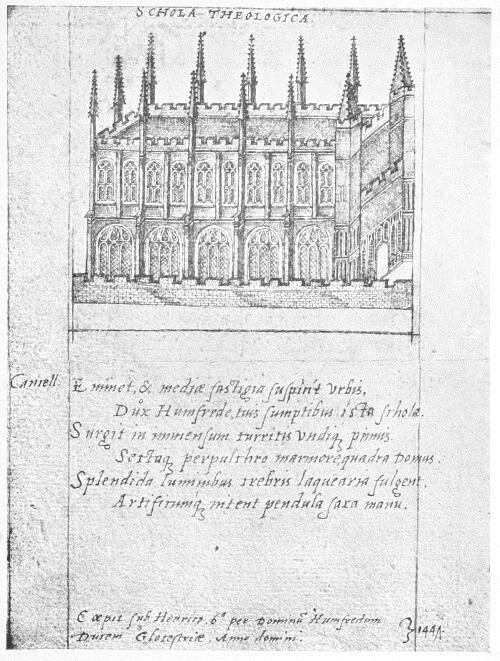Bodleian Library
In the heart of Oxford University sits a wondrous library with a fascinating history.
Our wanderings take us throughout the history of the oldest library in Great Britain. We’ll discover how this wonderful institution came back from the brink to become something that is of international importance.
A University in need of a Library
Part of the University of Oxford, the Bodleian Library was one of the first, and therefore one of the oldest libraries in Great Britain. The libraries, for there are several, at the University of Oxford are some of the most well-known around the world. They have an amazing collection of books and manuscripts that you will be hard pressed to find in one spot elsewhere, and some of their buildings even go as far back as the Middle Ages. These old buildings are even still used by the University today for teaching and such things, and forget about the books, they themselves attract their fair share of tourists.
Way back when, historians think around 1320, the University was in need of a library so Thomas de Cobham, who was also known as the Bishop of Worcester supplied the funds needed for this little library. This little library found itself in a room above the University Church of St Mary the Virgin. That’s right a room. It literally barely had enough books to fill a room. And while the collection has outgrown this room, the room itself still exists and is once again performing its duty as part of the church.
Soon after along came who else but the younger brother to Henry V, Humphrey, Duke of Gloucester. He was kind enough to donate his collection of 281 priceless manuscripts, creating the library known as Duke Humphrey’s. The University was so grateful that they even built a whole new library just for the Duke’s books at the Divinity School.
But Humphrey’s Library only lasted about 60 years, purely because of the dreaded Edward VI. In his hope to rid England of any traces of the Catholics, he sent Richard Cox, the Dean of Christ Church, to the University in 1550 to remove any books that contained
Superstitious books and images.
Which coincidentally was almost all of the books. Atrocious things happened to these poor defenceless works of literature, including the historically horrid, burning. Here’s Historian, Anthony Wood to lay it out for you:
Some of the books so taken out by the Reformers were burnt, some sold away for Robin Hood’s penny worth’s, either to Booksellers, or to Glovers to press to their gloves, or Taylors to make measures, or to Bookbinders to cover books bound by them, and some also kept by the Reformers for their own use.
Unfortunately back in the 16th century, the University of Oxford wasn’t the popular, flush with cash university that we know it today. They didn’t even have enough to rebuild the destroyed collection. So it was in 1556, that the space the little library had called home, was replaced by the Faculty of Medicine.
It was Sir Thomas Bodley to the rescue. A Fellow of Merton College and a former diplomat to the great Queen Liz I. He had the fortune to marry a rich widow and in his retirement had decided that he
Could not busy myself to better purpose, than by reducing that place (which then in every part lay ruined and waste) to the public use of students.
And so it was in 1598, that the old library became new again, with a collection of about 2500 books, some of which Bodley donated himself merging with the books left over from Humphrey’s Library.
Thomas James was appointed as the librarian, and the library officially opened on 8 November 1602.
Since 1602 the library has expanded and expanded, not too quickly at first, but it certainly gained enough momentum over the last 150 years to include everything that it does today.
Building a Library
Bodley did a lot more than just pick the library up off the ground and brush it off. In 1610, he organised to have an agreement with the Stationers’ Company of London, which basically meant that every single book that was published in England a free copy would be given to the library. This pretty much set the library up for its future as one of five legal deposit libraries in the country, but these extra books meant that space become very limited.
For the next ten years, Bodley set to work planning and financing the first extension to the library, known as Arts end.
Now Bodley may have died in 1613, but his work didn’t stop. Not long after he died the work he’d already done setting up the School Quadrangle began.
The building was designed for students. For lectures and exams, you know, all the things students do. Bodley set this up because he hated what was there before. He wanted to replace what he called
Those ruinous little rooms
So that future generations could learn in a better environment.
And it didn’t stop there, in his will Bodley left enough money for an addition of a third floor, which was meant to be
A very large supplement for stowage of books.
This actually also became the first museum and picture gallery open to the public in England.
While the quadrangle was technically structurally complete in 1619, the work on the thing didn’t officially finish until 1624.
And yet it still didn’t end. Another extension was added in 1634 to 1637. But this extension is actually known as Selden End, after John Selden, a lawyer who gifted 8000 books to the library.
After this it seemed that all the library did was receive and accept gifts of books and manuscripts. These came from a variety of sources, but most prominent are; the 3rd Earl of Pembroke in 1629, Sir Kenelm Digby in 1634 and William Laud, the Archbishop of Canterbury in 1635.
It was because of these donations being added to the libraries collection that scholars from all over Europe started wandering down to Oxford, and the library was forced to allow scholars that had come from around the world into its reading rooms. But, contrary to what goes on today, undergraduates of the university weren’t actually allowed to use the library.
After all this great work, the rate at which the collection was growing started to slow, with no books being purchased at all between 1700 and 1703. But thankfully this slump wouldn’t be for long, new buildings were on their way.
The nicest and most beautiful of these new buildings belonged to a Mr John Radcliffe. Well technically it belonged to the University, but this Radcliffe guy thought it all out and got it going.
Well, technically he just gave a whole heap of money to some people to buy some land and build some buildings, and buy some books and pay for a librarian. So at the very least he funded it all, which we all know is the most important bit.
The building that eventuated, was quite different to its surroundings, in that it was a circular building amongst a whole heap of right corners. But this point of difference was actually in its favour, becoming a
piece of classical architecture
It was an architect that went by James Gibbs who designed the building, and it was built between 1737 and 1748, but didn’t open until a year after it was completed. Originally called the Radcliffe Library, it was actually independent from the main Bodleian library for quite a while. It wasn’t until 1860 that it fell under the Bodleian’s umbrella.
It wasn’t until 1788, that the Bodleian Library was allowed to use the first floor rooms of the Schools Quadrangle, and it wasn’t quite a while later in 1859, that the whole of the Schools Quadrangle was pretty much in library use. Which was actually pretty handy, because once again the collection had started growing and space was becoming a scarce commodity. And even more space was found when the Radcliffe Library was finally apart of the Bodleian, just taking it over and stuffing it full of books wasn’t enough. A name change was also in order. And so it went from being known as the Radcliffe Library to the Radcliffe Camera.
Now this name might confuse some of you, I know it confused me when I first heard of it. Is it a library for cameras? A library for photos taken with cameras? What do cameras have to do with books, the traditional item found in a library? Well, it actually has nothing to do with cameras. But a lot to do with a specific ancient language, Latin. As it happens, ‘camera’ is the Latin word for ‘room’. So I guess the Radcliffe Library kind of had a demotion to the Radcliffe Room.
Moving away from the woes of Radcliffe and back to the ever increasing collection of the Bodleian Library. The agreement that Bodley had made way back when with the Stationers’ Company, meant that by 1849, the library had amassed an estimated 220 000 books and 21 000 manuscripts. Quite a step up from where it had begun. But it wasn’t just books and manuscripts that the Bodleian held on to. If you wandered through you could also find pictures, coins, medals, sculptures, and the odd ‘curiosity’ or two. The most notable seeming to be a stuffed crocodile from Jamaica.
And by the end of the 19th century, the Library had another surge and was regularly seeing more than 30 000 acquisitions coming through the doors to its new permanent home each year.
By 1914 though, the number of books in the library had done what must have seemed impossible at the beginning of this little journey and got to a million books. Which of course meant that space was once again a major issue. But what is a University if not full of smart thinkers. Instead of building up, they decided that underground would be more efficient and built extra storage space for all their books underneath Radcliffe Square in 1909 through to 1912. Making this space the largest book storage space in the world at the time.
Sadly this didn’t exactly fix the space problem, only prolong it. And so it was in 1931 that the decision to build a whole new library was made. Now this new library was definitely something. It had plenty of space, specifically for 5 million books, room for the different library departments and rooms for reading. This brand new building was built where a row of old timber houses used to stand on Broad Street.
This new library was designed by architect Sir Giles Gilbert Scott and built between 1937 and 1940. And in 1975, the library managed to grab some office space in the form of the Clarendon Building, which was actually originally built for the University Press in 1712 and 1713. But the Clarendon Building was all about location location location. With it sitting right between the Old and New Libraries, it just made sense. Which meant that the entire area from the Radcliffe Camera to the New Bodleian Library and coincidentally the centre of the historic University of Oxford was now apart of the Bodleian. My my, how the times change.
It was quite recently in 2015, that the New Bodleian Library was completely renovated, where the designers were able to introduce large public and academic spaces known as the Weston Library.
With all these new large spaces just for the public, you would think that space was no longer an issue for such an influential University. But that’s only because the Bodleian has numerous storage spaces and areas that are actually off-campus. Not to mention they have taken nine other libraries in Oxford under their wing. Which means that the Japanese Library, the Law Library and the Radcliffe Science Library can now add a ‘Bodleian’ to the front of their names.
Recently, some poor bugger had to sit there and count every single book. It must have taken them ages, but they finally got there and the magic number is 9 million. From 2500 to 9 million. A measuring tape was even taken around and they reckon that those 9 million books are sitting on 176 kms of shelves. And there are 2500 seats for those wishing to read the 9 million books.
Using the Library
For Uni kids these days, and those scholars that travel from around the world to study at such an illustrious world-renowned University, the name ‘The Bodleian Library’ is pretty long, so amongst Oxford scholars, the library is known simply as ‘the Bod’.
You would have thought that the number of scholars travelling from around the world to study at such an illustrious world-renowned University would have been quite a significant number. You know people desperate to get at all that literary knowledge. But oddly enough, throughout the 20th century, the average number of readers a day was only about a hundred people.
But this is a step up from 1831, when there was only 3 or 4 people heading to the library a day. But I suppose we do need to take into account that there wasn’t any heating until about 1845 and no fake lighting until 1929. And with the Library only being opened from 10am-3pm in winter and from 9am-4pm in summer, I suppose this makes sense.
Now a point of difference that the Bodleian Library has with pretty much almost every single library in the world, is that you can’t actually borrow any books. And this isn’t a flexible rule either. Way back in 1645, Charles I, who I might add, was the King at the time, wasn’t allowed to borrow a book. Imagine having that conversation. Seeing as his father united England, Scotland and Ireland, you’d think they’d make an exception. But the Library stuck to their guns.
There’s actually a full on oath you need to take if you want to get anywhere near the books. And it goes a little something like this:
I hereby undertake not to remove from the Library, nor to mark, deface, or injure in any way, any volume, document or other object belonging to it or in its custody; not to bring into the Library, or kindle therein, any fire of flame, and not to smoke in the Library; and I promise to obey all rules of the Library.
You can definitely see that they’re still afraid of the books that were burnt throughout the reformation. You do have to admit though, great kindling.
For those who aren’t with the University in anyway, students, lecturers, fellows, they have to sign a written declaration to the oath, although for those more traditional individuals, oath ceremonies still occur. The oath has been translated into over a hundred languages so there’s really no getting out of it.
Things have obviously changed since the early days of the University, technology has progressed eons and a lot of those discoveries happened at Universities.
The Radcliffe Science Library now offers 3D scanning and printing services to those affiliated with the University. Since 2015, the Makerbot Replicator 2 has printed around 1160 items. These included
GPS collars for Ethiopian dogs, prosthetic hands for amputees in Sierra Leone, a full replica cast gallery of Classical sculptures in miniature and whole range of other teaching aids and useful objects.
Speaking of technology, the University even has it’s own Digital Library specifically for what else, but an online version of its collections. The Library, which began in July 2001, has even been included in the Journal Server open-access digital library, meaning that the library’s resources are freely available, digitally of course.
And in 2004, the University teamed up with Google with an aim to take a million books from the Bodleian Library and turn them digital.
Library facts
Now there’s a whole heap of fun facts that go along with this fascinating Library. So listen up because they’re about to come at you thick and fast.
When you’re wandering though the library on one of their tours, no doubt you’ll wonder what their smallest book is. Well you’ve come to the right place, because that tiny little book is the ‘Old King Cole’ which is just a mere 0.9mm high. That’s not even a cm, how does that even work? How do you read it? Really really up close with a good magnifying glass I would think.
And now I suppose you’re wondering about, not the biggest book, but the longest book in the Library’s collection. While not technically a book, it definitely tells a story. No doubt the literature savvy amongst may already know that it’s the Bayeux Tapestry, which comes in at a whopping 7m long. Okay, so let’s move on to the most expensive book in the collection. That award goes to the Bay Psalm Book, which was bought for a whopping $14.2 million. You could buy several houses for that. Keeping to the items found in the Libraries collection, you may be surprised to discover that the Bodleian Library has some pretty cool books within its four walls. One of these being Shakespeare’s First Folio, a second being some papyri dating all the way back to the 3rd century BC. Gee whiz. Shakespeare isn’t the only famous work that the Library claims as its own. The Bodleian also has its own Gutenberg Bible. You might be surprised to discover that it only cost the library £100. But back in 1793, when they bought the bible, £100 was a whole heap of money. In fact it was 1/5 of the Library’s budget for that entire year. But they really knew what they were getting, because that book is definitely worth a whole lot more now.
And now to the most interesting fact of the episode, the most popular thing bought from the Libraries gift shop. What else but a leather bookmark.
Now the Bodleian Library is one of the oldest libraries in Europe, and across all the libraries that come in under the Bodleian umbrella means that together they have over 13 million printed items, ready for some quality reading. Being around for over 400 years, means that the Bodleian has managed to be in the right place at the right time to feature as a background character in about 14 movies and tv series’. I won’t list all 14 here now, but some of the more well-known ones are, three of the Harry Potter films, specifically Philosopher’s Stone, Chamber of Secrets and Goblet of Fire. It’s been in an X-men film and two Inspector TV shows featuring blokes named Lewis and Morse.
We now know that back in the early 1400s, the entire libraries collection could have fit in a single chest. And would probably take the average reader a couple of weeks or, if they were really busy, a couple of months to get through the collection. But these days, the most avid reader, and I’m talking a book a day, it would take them over 600 lifetimes to get through the expanded collection.
We’ve already touched on the number of readers visiting the library and doing some active reading a day, but the total number has definitely grown since the early days. Back in 1602, there was a total of 248 readers. By 1945 there was 700. And by 2014, this number had jumped almost 100 times to 64 242.
And to end our lovely fun fact bonanza, many a famous scholar has stepped through the halls of the Bodleian Library and it’s many sub-libraries. Among them are 5 Kings, 40 Nobel Prize winners and 26 Prime Ministers. What a collection.
For those in the UK - click here
-
Collector and their collections: “Jewish Treasures from Oxford Libraries” - Jewish Standard
Oxford’s Bodleian Library buys 500-year-old book-box from Paris dealer - Antiques Trade Gazette
UK Library on fundraising drive to conserve rare Mughal miniature collection - The Tribune India
A new tower of Babel rises in the Bodleian Library - Apollo
Bottling the smells of the Magna Carta, Iliad and Shakespeare for a whiff of history - ABC News
Bodleian Libraries’ ‘obscene’ books go on display - BBC News
What it’s like to use the Hogwarts Library - Book Riot
How to plan a walking tour through literary Oxford - National Geographic
Burning the Books by Richard Ovenden review - The Guardian
Ancient map puts China in its proper place - Asia Times
Leonardo to the present at Oxford’s Bodleian Libraries - Financial Times
-
Fascinating Facts - Bodleian Libraries
The Bodleian Library Oxford - Bodleian Libraries
Bodleian Library, Oxford - Sacred Destinations
Visit Bodleian Library - Bodleian Libraries
History of the Bodleian - Bodleian Libraries
Five surprising facts about Oxford’s Bodleian Library - AM Reading
A history of the Bodleian - Bodleian Library & Radcliffe Camera
Disclosure: As an affiliate marketer, we may receive a commission on products that you purchase through clicking on links within this website.
